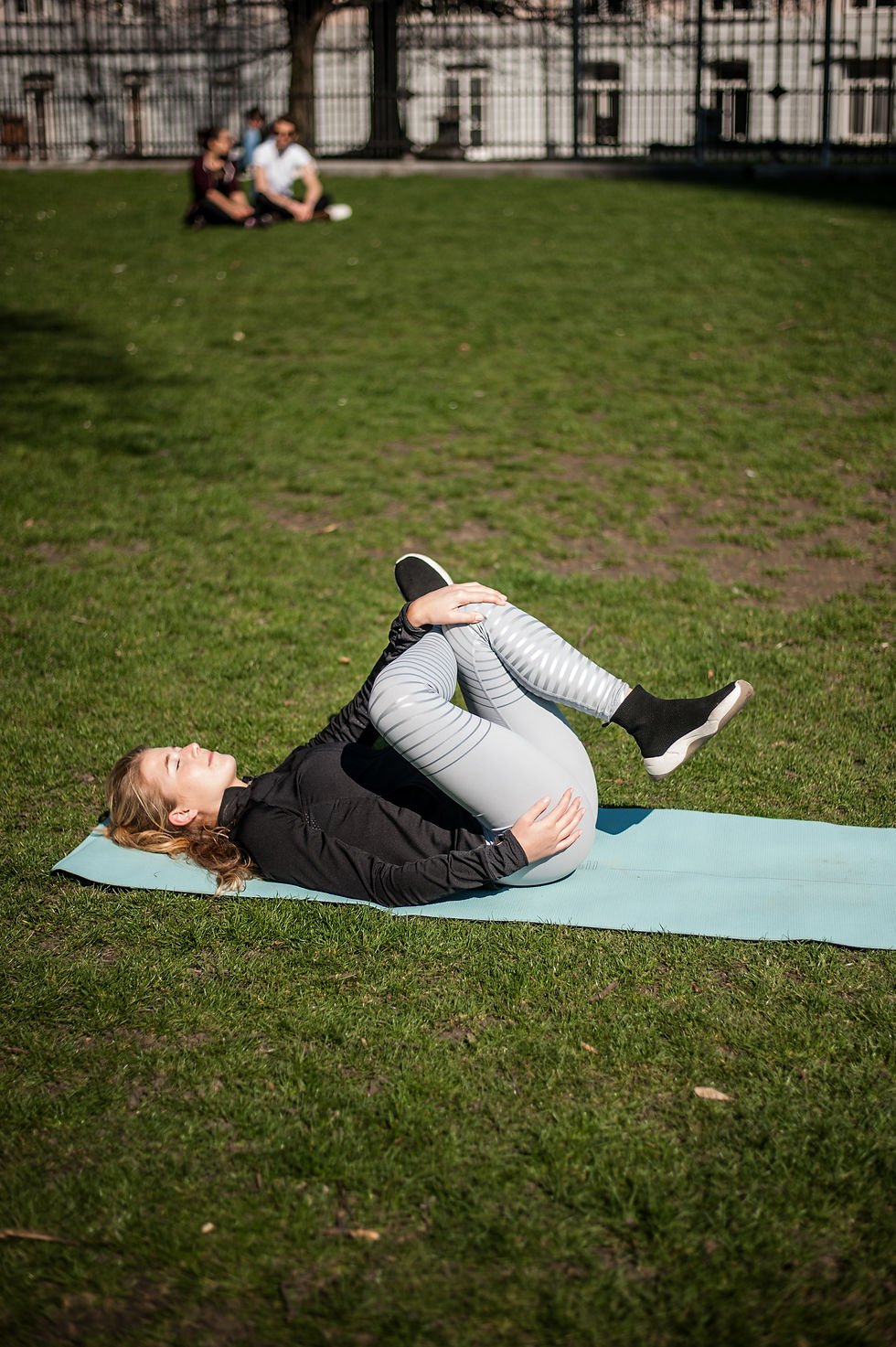Get ready for the 20K of Brussels with us!
- Marie de Burbure
- Apr 5, 2019
- 3 min read
Updated: Apr 24, 2023
A few weeks to go and we will be at the starting line of THE most famous Belgian race: 20K of Brussels!
Together with Hélène, running coach and expert at Run for Fit, and Philippine, dietitician and expert in sports nutrition, we will explain how to get ready to run these 20K.
We will give you tips and tricks about running, strength exercises and nutrition.
Running Tips:
1. Have a training plan!
"If you fail to plan, you plan to fail"
It is super important to follow a plan! Why?
Preparing for a race is not about "just running" some days before. No! You must run at least two times a week, at different paces and distances. A good training plan is built in order to progress step by step without hurting your body.
No plan yet? Ask runningcoach Hélène!
2. Don't forget to rest!
"Less is more"
It's not necessary to run every day. Two (for beginners) to three times a week is already enough, especially if it's your first time. If you really want to do more, prefer walking, swimming or biking.
3. Wear the right shoes!
"Shoes can change your life, ask Cinderella"
In our opinion, it's worth it to feel good and pretty when you go for a run. (Our favorite Belgian brands are Pure By Luce and 4254), but then again it's not a priority.
What is (strongly) recommended is to buy at least a good pair of shoes! It's part of the game to take care of your body! Where to find them? At the Trakks store (Brussels, Ghent, Namur).
You get 15% off with Run For Fit!
Strength & stretch exercises :
Next to your running plan, it's important to strengthen your body with good muscular and stretching exercises.
Here are a couple of exercises to strengthen your legs - abs, and butt:
Strenght exercices :
1. Lunges with leg up
Excellent for: Hips - glutes and thighs. These are the main muscles you need for running.


2. Squat
Excellent for: Thighs, hamstrings, and butt.
Tip: While doing squats it's important to put all your weight on your heels.

3. Mountain climbers
Excellent for: Whole body! Legs - abs, butt, and arms


Stretch exercises :
1. Downward-facing dog
Excellent for: Opening of the hips and shoulders, stretching hamstrings and calves.

2. Deep lunch stretch
Excellent for: Stretching hips, thighs, and hamstrings.

3. Glute stretches
Excellent for: Hamstrings, butt, and glutes

Nutritional tips :
Sporty or not, a balanced diet is vital. A diet with adequate proportions of carbohydrates, proteins, lipids, water, vitamins, and minerals.
A healthy adult required from 2000 to 4000 calories a day depending on their weight, height, and level of physical activity. Its needs can be increased in case of high activity.
Before the race:
About three days before racing, it is strongly recommended to increase carbohydrate consumption to about 60 to 65%. Avoid products rich in refined sugar (cakes, cookies, soda, etc.).
Racing day:
3 hours before racing, it is important to eat a light meal, rich in carbohydrates. Poor in meat <100 g (proteins are slowly digested). Also, take fruit and drink enough water.
During the race:
Always carry with you an energy bar in case of craving or energy loss. These can be purchased commercially or homemade.
After the race:
The night after the race, promote a rich carbohydrate plate.
The next day, restart a normal diet.
Hydration:
Hydration is crucial when preparing for intense activity. The effort causes sweating up to 1.5 liters per hour, so it is imperative that this loss is offset by a contribution. Dehydration leads to a disturbance of body temperature and reduces endurance and performance. Before the race: 2 hours before, drink approximately 500 ml of water and a coffee without sugar or milk (coffee causes a delay in the consumption of glucose reserves).
During the race: It is important to drink regularly throughout the race. The consumption of fresh and flavored drinks helps to encourage drinking. In supermarkets, you can find drinks called « isotonic drinks » containing the same amount of sugar and salt as the human body and thus allowing a good balance of electrolytes. For instance, you can consume Gatorade, Powerade.
For the ones who prefer homemade products, this is what you can make:
A liter of water
The juice of 2 lemons, 1 orange, or 50 g of grape juice.
1 pinch of salt
1 teaspoon of honey or sugar
After the race: Drink a sufficient amount of water to replace the lost fluid, lower the acid level, limit digestive disorders and allow good reconstruction of damaged tissues.
GOOD LUCK & LET'S DO THIS!!!
Lots of love,
Marie


Comments